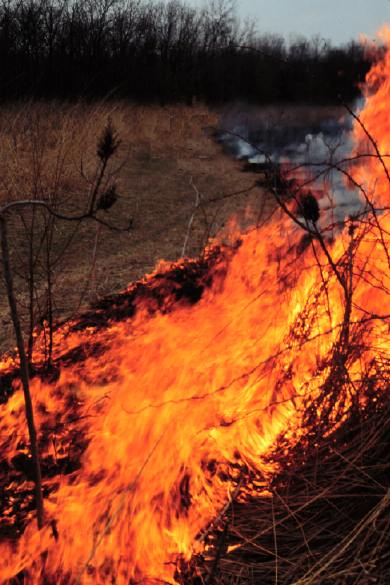
Fire, a favorite Native American land clearing method.

Fire, a favorite Native American land clearing method. |
Burning bottomland forest or prairie to clear land for agricultural fields had many benefits for Mississippian subsistence economy (ECON). Burning returned nutrients to the soil and removed the canopy, thereby opening up the ground to sunlight and rain, all of which promoted excellent growth of cultivated crops. As in prior times, Mississippian fires created an edge-effect where newly burned areas abutted unburned vegetation. Plant and animal diversity at the edges between ecological communities was significantly higher than in the forest or in the burned or regrowth area. When agricultural productivity dropped off and fields were abandoned, economically important plants and animals re-occupied the land, taking advantage of newly created habits. Some have argued that the expansive floodplain prairies noted by early explorers and surveyors of midwestern river valleys were created in large part by centuries of regular burning by Native Americans (D. Asch, personal communication 1997). |